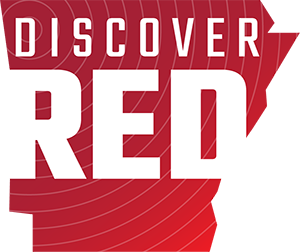Fish in the Fields
Ben Runkle: Thanks for having me.
HY: So can you start by giving me some background on “Fish in the Fields?” How did it come about and where are you doing it?
BR: Yeah, so we’re doing it in a commercial rice farm in eastern Arkansas in Lonoke County, about 45 minutes east of Little Rock. The concept was introduced to us by partners from California. There’s a nonprofit, or a foundation-supported group, there called the Resource Renewal Institute, who is interested in making transformative change for the way that we use our landscapes. In ways that are environmentally-friendly, farmer-friendly and explore different types of regenerative production. So, they approached me about three years ago, based on the five or six years that my research group had been performing research at this farm. We have developed a reputation around expertise in this area of understanding farm activities, their interactions between the carbon and water cycle, and thinking about how farmers can produce their product more sustainably and with higher yield.
And so we have developed this reputation – this nonprofit from California reached out to us and said, “we’ve been doing this work in California, but so much rice is grown in Arkansas that we would like to explore the potential for growing fish as a crop, concurrent, or in the off season, with rice. What do you think?” And so we started designing this experiment and this project with input from the farmers who are hosting us and many other project partners like aquaculturists and people who have expertise in fish, which I know nothing about, and really developing, how can we scope this from the beginning to the end? How does it work to put fish into the field? How does it work to maintain them? What environmental benefits can we imagine? What economic benefits can we imagine? And then over time, it’s developed into something much bigger.
HY: Speaking of those environmental benefits and economic benefits, let’s talk about what are they specifically in stocking rice ponds with fish?
BR: Right. So our project is looking at fish in the winter period, which is normally not a productive period for the rice farmers. They flood their fields for waterfowl and hunting leases, but it’s not an economic or agricultural production period. There are other projects in the world where fish are grown concurrently with rice in the summer season, but we’re looking at the off season. The fish can help consume and degrade some of the leftover residues of the rice plant. In theory, there’s evidence from other places that they can reduce methane emissions from the field in the winter period, and they can provide an alternate source of income for the farmers. If the fish are harvested and then sold on the market, then they can derive income from that.
HY: Is there similar projects that you’re using, like as a point of comparison or that you’re aware of?
BR: Globally in Asia, there’s a lot of cross cultivation between shrimp and rice or other crab, frog, duck, kind of species, also other types of fish. There are some projects in California that are exploring the use of fish in the wintertime to be grown in these rice fields to help break down the residues that are left over in the rice fields. And so it seems something interesting and worthwhile doing in Arkansas. In Louisiana, there’s a big rotation with crawfish in rice fields. The farmers go one year in rice, one year in crawfish. So there’s developing more and more interest in using these sites, which are really good at holding water, have a lot of agricultural residue, as kind of the platform for other production systems.
HY: Did you guys, at any point consider the crawfish for Arkansas?
BR: We thought about it, and the farmers that we work with have done some exploring with it, but I think they tend to do better in a warmer environment like Louisiana. So they might not do as well under the really cold conditions of some of our winter days.
HY: And what kind of fish are we talking about here?
BR: They’re called darters. They’re very small fish, basically like minnows. They’re feed for other fish, is the most common use for them.
HY: So how far into this experiment are you?
BR: Right. So we’ve just concluded our third winter of growing fish, raising fish in the field. And we’ve learned something every year. The harvest this year – they’ve developed a prototype system to turn the fish into a pet food. So they’re actually flash freeze-drying the fish. And then we’ll package it and sell it on the market for fish food. That’s a way for the label of the product to also help tell the story. So it has an educational component there. It helps people understand the regenerative nature of this project. With my group, we’ve been doing research on the methane dynamics in the winter, and I have a graduate student who’s just finishing his master’s thesis. So it’s been an educational and scientific project for him. He’s found that there’s been very low methane emissions in these fields. So that’s an environmental benefit. There has been some evidence of the fish consuming the leftover residue in the field. So that provides an agronomic benefit for the farmer. So far, in a systems perspective like this, there’s a lot that’s changing. We have closely monitored one field where the fish were and the adjacent field where there were no fish, and we’re doing some inter-comparison between them. But in these large production farms, it’s tough to get a really clear and rigorous scientific result in terms of attributing any change to the presence or absence of the fish. We’ve done a lot of exploration with the nonprofit in California, with the farmers in Arkansas, with the aquaculturists who are helping us to help understand and scope out how would this system work? What are the changes to look out for? For example, they had to even order a pump from France that could help harvest the fish in a more efficient manner. So, it’s things like that, like the support of a foundation is really great because they can provide different types of thinking and resources to look at this as a whole systems change. Making regenerative agriculture is not straightforward. And so looking at all of these different perspectives together has been really valuable in terms of a big picture project perspective.
HY: You’ve mentioned your partners out in California, but I’m kind of wondering about I think you said it was a “large agricultural production operation in Arkansas?” Can you tell us a little about your partners? Like what do they get out of this? What is their interest?
BR: Yeah, sure. So the rice farmers are fantastic. They’re a family farm called Zero Grade Farms, the Isabell family. And they’re really interested in supporting science. They want to be on the cutting edge of things. They have had positive experiences before, with my predecessors at the University of Arkansas, and they’ve been really interested in pushing the boundaries of how do we make rice more sustainable, more profitable, how can we use our landscape in different ways? And so they’ve always been curious and excited to have researchers on their farm. They’ve been an incredible support to me and my research program and my partners. And they were intrigued by the idea. Lonoke County is also home to some really big aquaculture production facilities, and so some of the fish farmers are also enthusiastic to try to figure out, is there a new market for our product as well? Could we be involved in fallow season fish production in Arkansas’ rice fields? So the two different kind of approaches, the fish farmers and the rice farmers, are all enthusiastic to try to develop something new, something different, and see if it might be profitable one day.
HY: I know you’re still very much in the experimental phase, but what kind of benchmarks do you think Arkansas farmers would need to see, particularly the rice farmers, who wouldn’t mind a second crop in winter, what kind of benchmarks would they need to see to take on an extra challenge or an extra risk, or however you want to define what you’re asking them to do?
BR: Yeah, those are great questions and it is a challenge. Farmers are busy. The thing that I learned about them, they’re always thinking ahead. They’re balancing a lot of different things. And so to make a systems change like this, they would need to see substantial benefit. It will necessarily involve a little bit more of their time and some risk in managing. And so the overall aim of the project is to kind of de-risk that. How can we reduce some of the burden on them? How can we design protocols that are tried and tested in different scenarios? And I think they would need to see a profit. They would need to see that it does not impact their main crop of rice. So far, I don’t see a pathway for it to heavily impact the rice production season, but we need to test out a couple of different things to make sure. We need to make sure that there’s a market for this uniquely grown fish, so that the kind of story behind it can be a part of its marketing and provide some of the profit to the farmers.
HY: This is a three-year grant. Can you outline the next kind of phases of the grant, where you’re hoping to get to? I’m guessing you’re not going to be able to have all your questions answered before it’s done, but where do you want to get to?
BR: Yeah, sure. So we’ve actually been quite lucky with this program. It started stapling together funds from this foundation in California. They helped us write a couple of different grants to different groups. One is a subsidiary of the US Department of Agriculture called the Southern SARE Grant. That’s Sustainable Agricultural Research and Education, and that provided some seed funding for us. We also got support from the state’s NRCS Office – that’s the Natural Resources Conservation Service. And a conservation innovation grant that’s this past winter and two more winters ahead. So we have some funding and support for my team to go out and measure the implications of this on the environment. We would like to study more about the methane dynamics, the fish productivity, harvest methods…that seems to be a really critical factor is how to actually get the fish out of the field when we have to drain the fields just right so the fish are congregating in a ditch and then sucking them out with this interesting pump system. So, it’s a complicated system and it needs some year-by-year iteration to improve.
HY: So who have you got working on the project with you?
BR: Yeah sure. So my team is excited and exciting to work with. We have this master’s student, he’s defended his master’s thesis and is about to submit the final revisions of that. We have two technicians and two postdocs working on the project, so it’s a pretty big team for my side. I also have collaborators of the U.S. Department of Agriculture in their Agricultural Research Service. Michele Reba in Jonesboro has been involved in the project. And then, of course, the farmers, the aquaculturists and some colleagues from other universities are also providing different types of support. So, it’s a really nice, collaborative, collegial environment. When we all think about this from different perspectives, we round out the story of what is the potential for “Fish in the Fields.”
HY: So do you have any sense of like how many rice farms are we talking about in Arkansas? What kind of production are we talking about?
BR: In total in Arkansas, there are over a thousand rice farmers and they’re all different. We’ve worked probably with 10 or 20 of them over the ten years I’ve been here at the university, and everybody has a different landscape, a different production history, different resources, different mentality. And so we’re working with one family. It would be really interesting to get more resources and try to test this out in different production environments where the conditions could be slightly different. The waterways or the ditches and drainage could be distinct. There could be different soil types, different rotational histories, different kinds of farm attitudes. And think about how this could work for them.
HY: And while you guys are doing this…You’ve got one at the, is it Zero Grade Farms? You’ve got one field that’s fallow and does not have fish, and you’ve got another one where you’re seeing what the effects are?
BR: Yeah, that’s right. So we do this kind of scientific experiment with one field with the fish. One field treated the exact same, but with no fish. And so we’re starting to see some of the differences between those fields. But it takes some time to see that kind of multiyear impact of this production system.
HY: And what kind of tools are you using to kind of measure these changes in the water?
BR: Yeah, sure. So, my team has some really neat instrumentation. We call it weather stations on steroids. So really, a lot of meteorological measurements that are measuring the methane gases coming off the field. Water vapor dynamics for evapotranspiration, temperature dynamics. We also have oxygen sensors in the ground. And we’re looking at different production metrics. So, one of the colleagues is flying a drone over the field to measure chlorophyl content. We’re taking water samples to assess the zooplankton and phytoplankton and also the different water quality parameters. So, it’s a really integrated system. We’re doing a bunch of different types of measurements. And it’s quite fun to do this out in the real world. We’re not in a lab or a greenhouse, and that provides some challenges, but it also provides an opportunity.
HY: And just to be clear, the fish wouldn’t necessarily just provide a second crop, it might also increase rice production?
BR: It might also increase rice production because they are creating a better environment for next year’s crop. They’ve broken down some more of the residue from the rice crop. They are processing and cycling some of the nutrients so it can provide agronomic benefits as well, possibly even reducing some of the fertilizer needs for the next season for the farmer.
HY: Ben Runkle, thanks for coming in today.
BR: Thanks for having me.
OUTRO: “Short Talks from the Hill is available wherever you get your podcasts. For more information and additional podcasts, visit ArkansasResearch.uark.edu, the home of research and economic impact news at the University of Arkansas. Music for Short Talks from the Hill was written and performed by local musician Ben Harris.”



